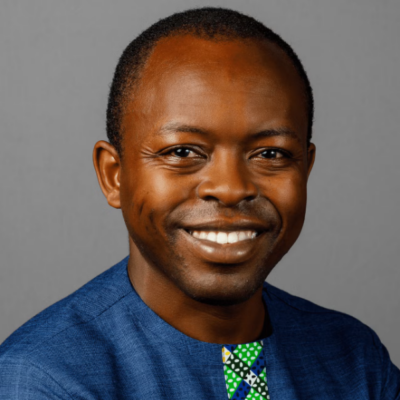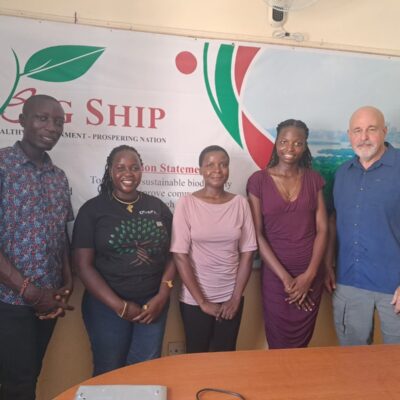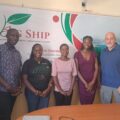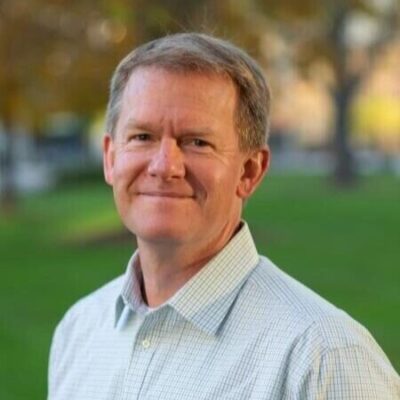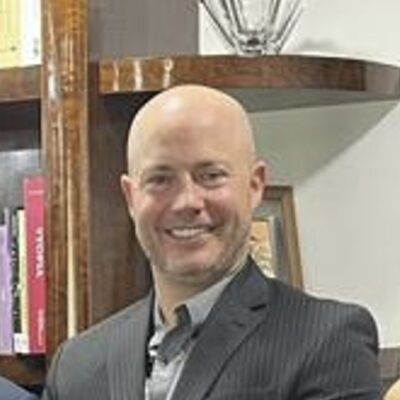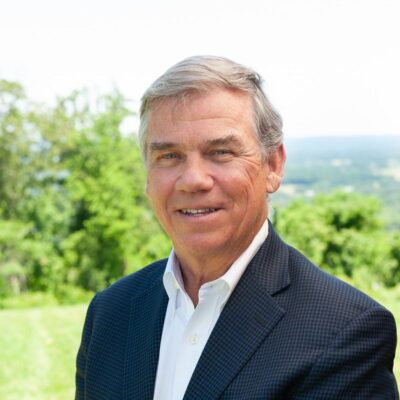Listeners:
Top listeners:
-
 play_arrow
play_arrow
116 | From Ticking Time Bomb to Demographic Dividend: James Mwangi and Kenya's Great Carbon Valley
-
 play_arrow
play_arrow
115 | Unpacking Donald Trump's Very Weird Environmental Orders
-
 play_arrow
play_arrow
114 | Michael Greene: Carbon Cowboy or Lone Ranger? Part 1
-
 play_arrow
play_arrow
113 | The Future of Environmental Finance: Strategies for Biodiversity and Climate Solutions, with David Hill and George Kelly
-
 play_arrow
play_arrow
112 | Fantasy Football and Dynamic Baselines: New Tools for Impact Assessment
-
 play_arrow
play_arrow
111 | The False Dichotomy Between Reductions and Removals (Rerun)
-
 play_arrow
play_arrow
110| Ecological Economics, Systems Thinking, and the Limits to Growth
-
 play_arrow
play_arrow
109 | How Brazil's Quilombola Communities are Planting the Seeds of Sustainability for Small Farms Around the World, with Vasco van Roosmalen of ReSeed
-
 play_arrow
play_arrow
108 | The Washington Post’s Head Scratcher of a Carbon Story
-
 play_arrow
play_arrow
107 | Francis Bacon and the Prehistory of Climate Finance. Second in an intermittent series on the Untold Story of the Voluntary Carbon Market
Transcript
Support Bionic Planet at patreon.com/bionicplanet
In Episode 99 of Bionic Planet, recorded in Mombasa, Kenya, the focus is on the efforts to revive the coastal mangrove forests that protect the seaside city and support its fishing sector. The episode features guests from the community-based organization, Big Ship, who have been working on mangrove conservation for 15 years.
The episode delves into the challenges faced in persuading communities to understand the importance of conserving mangroves and the innovative financing mechanisms used by Big Ship to fund their restoration efforts. The guests discuss the crucial role mangroves play in carbon sequestration, coastal protection, and supporting marine life.
The conversation highlights the Adopt-a-Site model employed by Big Ship, where degraded mangrove areas are identified, restored, and monitored over time. The guests emphasize the importance of engaging with the community, government institutions, and partners to ensure the sustainability of mangrove restoration projects.
The episode also explores the impact of youth involvement in mangrove conservation and the promotion of ecotourism as a sustainable income source for coastal communities. The guests share their experiences with the VIM program, which focuses on career mentorship and skill development for the youth.
Overall, the episode showcases the multi-faceted approach taken by Big Ship to address the challenges of mangrove conservation, promote community engagement, and create alternative livelihoods for coastal residents. The guests’ insights shed light on the importance of cultural preservation, environmental awareness, and long-term sustainability in mangrove restoration efforts.
Listeners are encouraged to support the podcast by leaving a five-star review and considering becoming a patron to help fund future episodes that aim to educate and inspire action in climate and biodiversity conservation finance.
Timestamps
In Episode 99 of Bionic Planet, recorded in Mombasa, Kenya, the focus is on the efforts to revive the coastal mangrove forests that protect the seaside city and support its fishing sector. The episode features guests from the community-based organization, Big Ship, who have been working on mangrove conservation for 15 years.
The episode delves into the challenges faced in persuading communities to understand the importance of conserving mangroves and the innovative financing mechanisms used by Big Ship to fund their restoration efforts. The guests discuss the crucial role mangroves play in carbon sequestration, coastal protection, and supporting marine life.
The conversation highlights the Adopt-a-Site model employed by Big Ship, where degraded mangrove areas are identified, restored, and monitored over time. The guests emphasize the importance of engaging with the community, government institutions, and partners to ensure the sustainability of mangrove restoration projects.
The episode also explores the impact of youth involvement in mangrove conservation and the promotion of ecotourism as a sustainable income source for coastal communities. The guests share their experiences with the VIM program, which focuses on career mentorship and skill development for the youth.
Overall, the episode showcases the multi-faceted approach taken by Big Ship to address the challenges of mangrove conservation, promote community engagement, and create alternative livelihoods for coastal residents. The guests’ insights shed light on the importance of cultural preservation, environmental awareness, and long-term sustainability in mangrove restoration efforts.
Timestamps
-
00:00:00 – Introduction to Big Ship Organization in Mombasa, Kenya
-
00:05:30 – Overview of Big Ship’s Thematic Areas and Programs
-
00:10:27 – The Adopt-a-Site Model for Mangrove Restoration
-
00:15:01 – The Impact of the VIM Program on Youth Participants
-
00:21:09 – Discussion on Carbon Finance and Alternative Financing Mechanisms
-
00:25:24 – Challenges Faced in Spreading Awareness and Engaging Communities
-
00:29:07 – Youth Awareness and Engagement in Mangrove Conservation
-
00:32:45 – Community Entry Strategy for Restoration Efforts
-
00:36:51 – Project Areas and Viability of Investments
-
00:37:48 – Youth Training and Ecotourism Program Promotion
-
00:40:13 – Cultural Adaptation and Appreciation in Coastal Communities
-
00:40:42 – Closing Remarks and Call to Action
Quotes
-
“You want to protect that ecosystem. So you keep on pushing and pushing until it comes into their senses and they get to realize they need to conserve.” – 00:00:35
-
“We know that the enemy is carbon, and we know its ugly face. We should put a big fat price on it, and of course, add to that, drop the subsidies.” – 00:01:29
-
“Mangroves shield the coast from storms and erosion, provide habitat for baby fish, and pull carbon dioxide from the atmosphere at a rate about 10 times higher per hectare than terrestrial forests do.” – 00:01:57
-
“But you quickly realized that the cost of even conservative harvesting, in terms of reduced protection, increased erosion, and plummeting fish stocks, not to mention climate impacts, dwarfed any income that people could get from timber sales.” – 00:03:23
-
“We are trying to tap into new areas. We also have a program that focuses on ecotourism. We want to venture into that.” – 00:07:32
-
“The investors are the partners who adopted sites. Like corporate? Even individual.” – 00:12:51
-
“It’s not really about being philanthropic, but just being reality, to be alive to the fact that conservation is a process.” – 00:13:24
-
“We are not interested in those huge chunks of plants for restoration. If the size of this room, which you can adopt, is enough to facilitate sustainability into the ecosystem, then let’s apply it.” – 00:24:03
-
“The finance will come. That’s what I keep telling myself about this show.” – 00:27:17
-
“You want to protect that ecosystem. So you keep on pushing and pushing until it comes into their senses and they get to realize they need to conserve.” – 00:32:55
Episodes
115 | Unpacking Donald Trump’s Very Weird Environmental Orders
January 27, 2025
114 | Michael Greene: Carbon Cowboy or Lone Ranger? Part 1
December 6, 2024
113 | The Future of Environmental Finance: Strategies for Biodiversity and Climate Solutions, with David Hill and George Kelly
November 28, 2024
